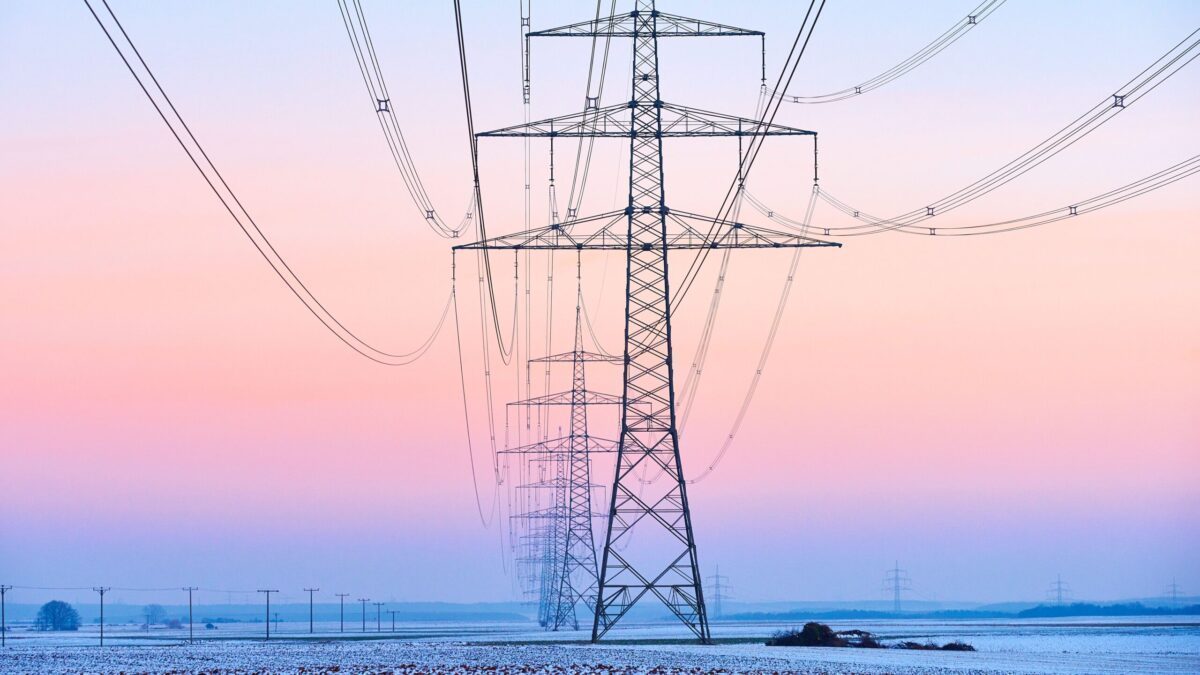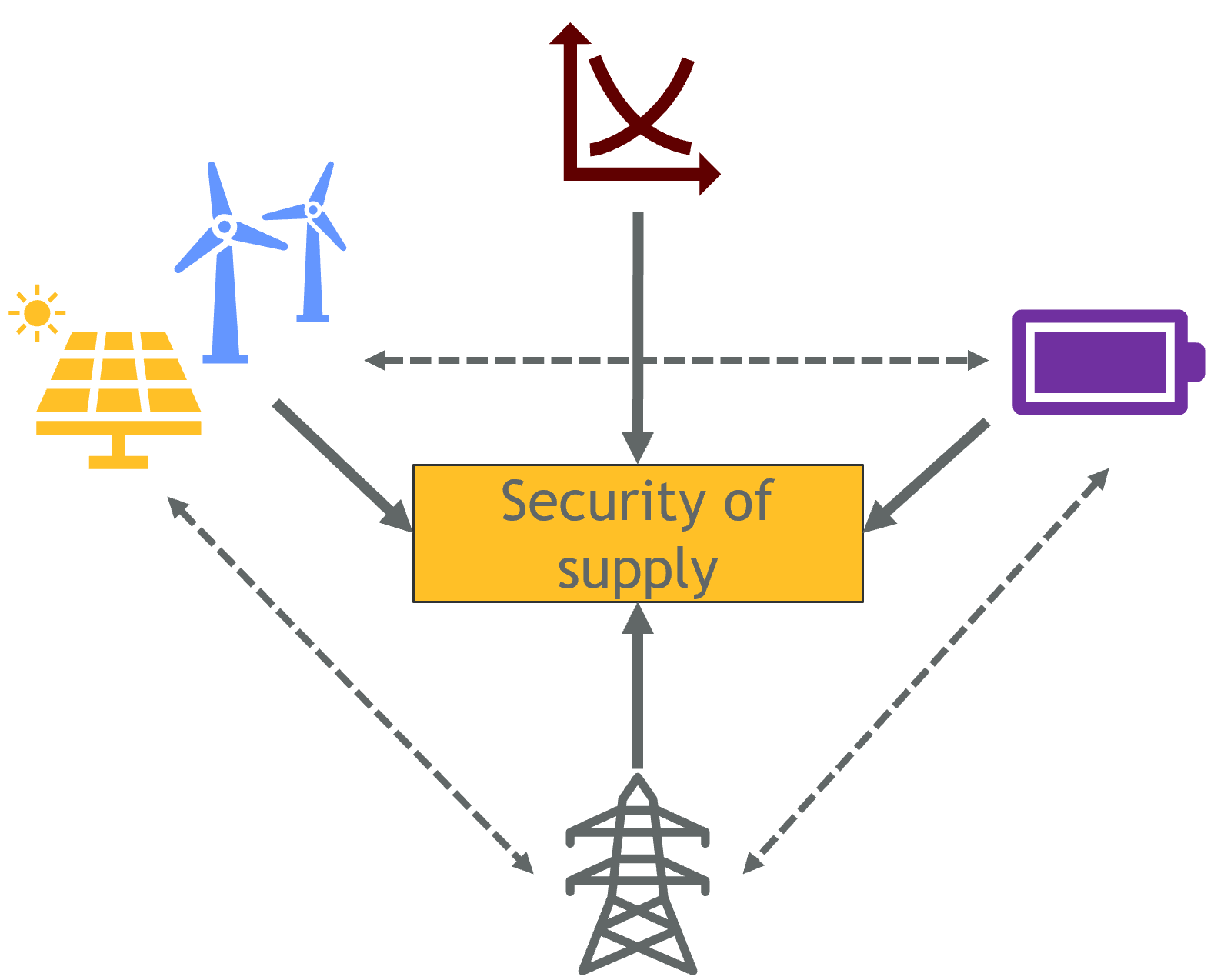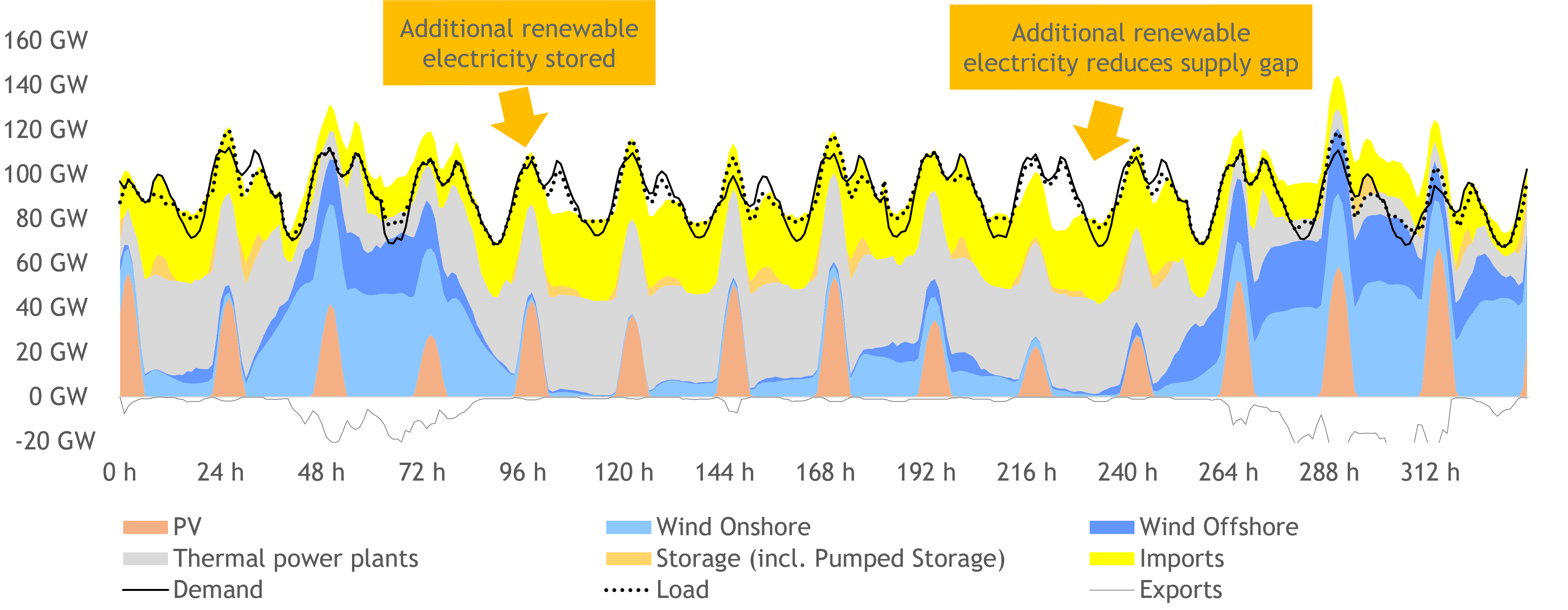
With the expansion of renewable energies, the weather dependency of electricity generation in Germany is increasing. A new analysis shows that the security of electricity supply in this decade is currently not guaranteed in all extreme weather situations. Decisive factors here include the rising demand for electricity due to progressive electrification, the dismantling of fossil power plant capacities and the relatively slow expansion of renewable energies.
This is the result of a new analysis by the Institute of Energy Economics at the University of Cologne (EWI) on behalf of the Society for the Promotion of the Institute of Energy Economics at the University of Cologne. In the publication “Analysis of Supply Security up to 2030”, a team from the EWI examines in which (historical) weather situations the power supply is secure at all times and under which circumstances supply gaps could occur in the course of this decade.

An analysis of weather data from 1982 to 2016 shows that supply gaps could occur in particular during weather situations with strongly below-average wind availability in northern and central Europe and significantly limited solar radiation in southern Europe. These two weather anomalies occurred in combination, for example, in January 1997 and in December 2007 over an extended period of at least seven days.
For such extreme weather situations for power generation, the EWI team analyzed and quantified the possibility of supply gaps for the years 2025 to 2030 in different scenarios of the electricity system development. In doing so, they looked at different paths to coal phase-out, renewable energy expansion, electricity import availability and storage capacity, and the degree of electrification between 2025 and 2030.
The team of Tom Brinker, Berit Czock, Hendrik Diers, Dr. Philip Schnaars, and Dr. Johannes Wagner cites a variety of factors for the likelihood of supply shortfalls occurring in the extreme weather situations considered. For example, ongoing electrification this decade, particularly of transport and heat, combined with a reduction in controllable power, is one reason for higher peak loads. “Making electricity demand more flexible is therefore of significant importance for the security of electricity supply,” says Schnaars, manager at EWI. However, the individual influencing factors should not be considered in isolation. Additional wind and PV capacity can also help to increase security of supply in extreme weather situations, he adds. This additional benefit is greatest when surplus energy can be stored and then used to cover peak loads, he adds.

In the scenarios considered, an accelerated coal phase-out by 2030 as envisaged in the coalition agreement means that more and larger supply gaps could occur in the period under consideration. These are larger by an average of 5 GW and occur 60 hours more per year than with a coal phase-out by 2038. These potential supply gaps can be countered with additional renewable generation capacity, especially in combination with additional battery storage. What all the scenarios considered have in common is that electricity imports from abroad make a significant contribution to meeting German electricity demand. “A reduced possibility to import electricity from abroad has a major impact on the security of supply in Germany. This highlights the need to look at security of supply at the European level,” Schnaars said.